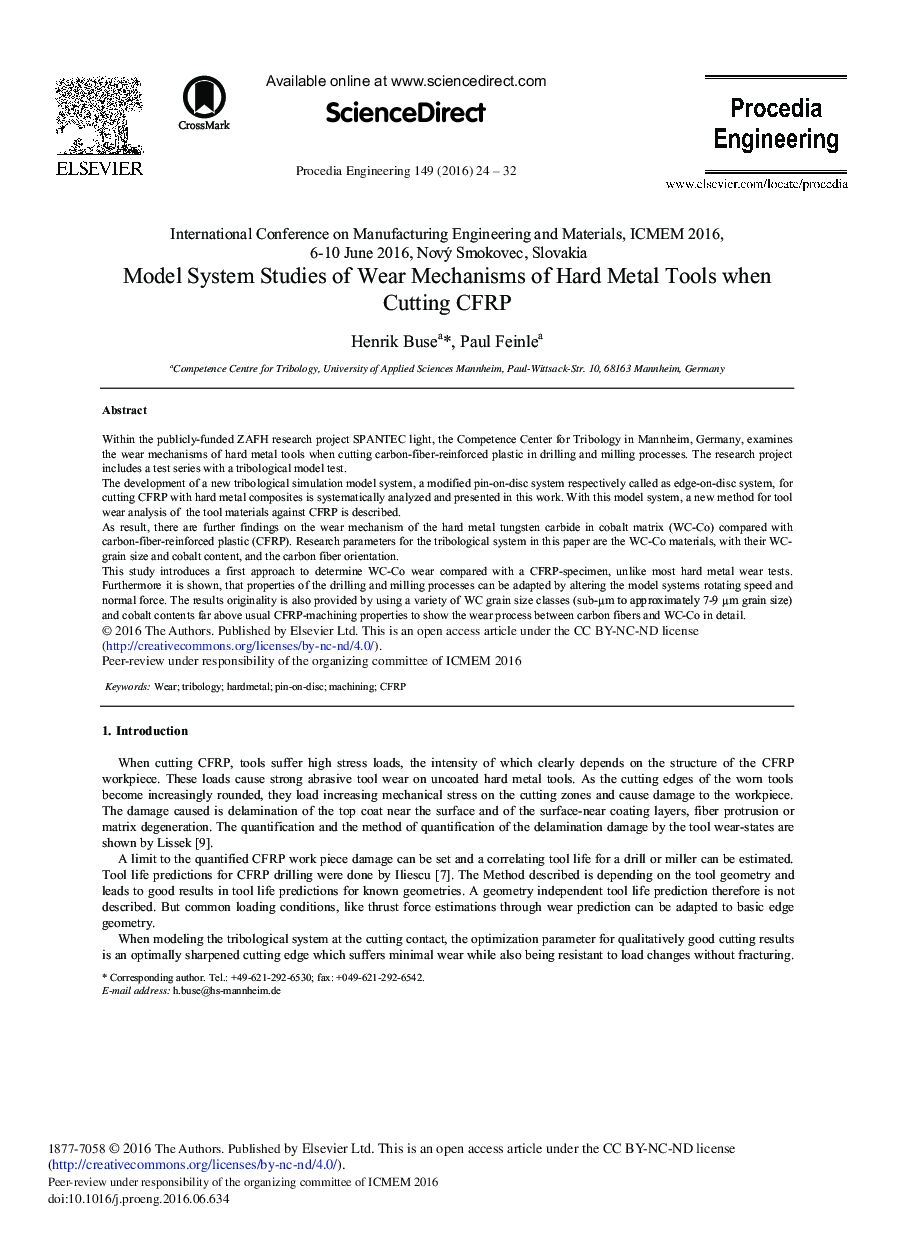| کد مقاله | کد نشریه | سال انتشار | مقاله انگلیسی | نسخه تمام متن |
|---|---|---|---|---|
| 853171 | 1470677 | 2016 | 9 صفحه PDF | دانلود رایگان |

Within the publicly-funded ZAFH research project SPANTEC light, the Competence Center for Tribology in Mannheim, Germany, examines the wear mechanisms of hard metal tools when cutting carbon-fiber-reinforced plastic in drilling and milling processes. The research project includes a test series with a tribological model test.The development of a new tribological simulation model system, a modified pin-on-disc system respectively called as edge-on-disc system, for cutting CFRP with hard metal composites is systematically analyzed and presented in this work. With this model system, a new method for tool wear analysis of the tool materials against CFRP is described.As result, there are further findings on the wear mechanism of the hard metal tungsten carbide in cobalt matrix (WC-Co) compared with carbon-fiber-reinforced plastic (CFRP). Research parameters for the tribological system in this paper are the WC-Co materials, with their WC-grain size and cobalt content, and the carbon fiber orientation.This study introduces a first approach to determine WC-Co wear compared with a CFRP-specimen, unlike most hard metal wear tests. Furthermore it is shown, that properties of the drilling and milling processes can be adapted by altering the model systems rotating speed and normal force. The results originality is also provided by using a variety of WC grain size classes (sub-μm to approximately 7-9 μm grain size) and cobalt contents far above usual CFRP-machining properties to show the wear process between carbon fibers and WC-Co in detail.
Journal: Procedia Engineering - Volume 149, 2016, Pages 24–32